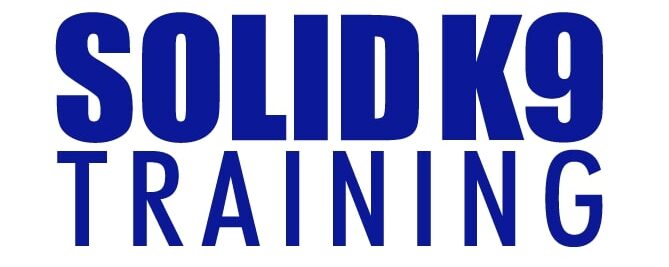Relationship Gaps And Unforeseen Consequences
Relationship Gaps And Unforeseen Consequences
By Sean O’Shea
What most folks don’t get, is that everything with your dog is connected. Every allowance or permissive moment, opens the door for another, seemingly unrelated behavior. They don’t realize that over-indulging your dog with love, freedom, and tons of unearned affection, creates perceptions about you that can lead to other issues. That everything you do or don’t do is giving your dog information about who you are and how he should respond to you. That you’re constantly dropping clues to your dog about what opportunities are available, as well as creating openings for instability.
When your relationship with your dog is lopsided, unbalanced, and based far more on “love” and spoiling than it is rules and structure, you’re going to have problems. (I think we all get that by now.) But the interesting part is that you never know how that information of permissiveness, allowance, and lack of accountability will show itself.
You think the spoiling might lead to begging or barking at you, but instead it leads to resource guarding. You think that allowing the pulling on the walk might lead to barking at other dogs, but instead it leads to growling and snapping at guests in the house. You think allowing jumping, barking, and craziness in the house will just lead to bad manners, but instead it leads to separation anxiety.
While the origins of these serious issues might seem dramatic and improbable, I can assure you we’ve seen them all in action. We’ve seen relationship gaps create what seem to be amazingly disconnected issues. The thing is, you don’t get to choose how your behavior (or lack of) affects your dog’s. You don’t know what’s going to come out the other end of a relationship that’s short on leadership, rules, and accountability, and long on chaos and permissiveness.
Oftentimes it makes clear sense. The behavior you think you’re possibly creating (and are ok with) is what you get. But just as often it’s not. Often the dog’s individual psychological makeup and personality create an outcome you’d think was totally unrelated. But what happens is, your dog’s personal insecurities, temperament, genetics, and attitude become a giant mixer – a mixer that combines with what you add to it. You both add your parts, stir them up with daily life and repetition, and voila, you get some nasty behavior that SEEMS totally unrelated. But it’s not.
We see so many dogs with gigantic laundry lists of issues. From annoying stuff to super dangerous. And the funny thing is, our program almost never changes. But all these dogs, with all these different issues, using the same program, transform. Do we sometimes need specific protocols for specific issues? Of course. But by and large, a simple program of believable leadership, non-negotiable rules, dependable structure, and accountability for poor choices are what make 95% of the changes.
Do you know how many resource guarders stop guarding once they experience a few rules totally unrelated to their guarding? Or how many territorial guys stop being territorial once believable leadership is in place? Or how many separation anxiety dogs relax and stop freaking out once they learn that structure, rules, and accountability are prioritized over freedom and affection?
Leadership gaps, rule gaps, structure gaps, accountability gaps – accompanied by permissiveness, affection, and freedom are the perfect recipe to create all manner of dog behavior problems. The thing is, you never know which ones.
Sean O’Shea
The Good Dog Training And Rehabilitation
Solid K9 Training Training Center- 25 Acorn Street, Providence, RI 02903
(401) 274 1078 Providence Training Center Info
*********FOLLOW Solid K9 Training**********
Subscribe To My YouTube Channel
Facebook
Twitter
Instagram
Pinterest

Hi Jeff & Sean,
These posts are great! Though I am not a professional dog trainer, as a horse
trainer and living on farms, many dogs have come through my life, including quite
a few that showed up at the farm on their own – or were dropped off under cover
of darkness.
These dogs were trained, vetted, and matched up with new owners and homes that
were a good match for the dogs – using the same basic methods I used with the horses,
and had also grown up using with our family dogs (of a notoriously hard-headed breed,
but not one most people think of!).
One thing that stands out for me is the issue addressed in ‘Blurred Lines’ and touched
on in many of the other posts: We are creating a lot of the stress and problems in our
dogs by treating them as though they are something other than dogs.
Substitute human, whether child, spouse, or friend, or ‘angel in a fur suit’… to me, none
of this seems fair to the DOG. We all understand that treating a child like a dog is not
a good thing, but when will we understand that treating a dog like a child is just as bad?
Then again, the totally feminine women I have known over the years who expected their
dogs and their horses and their to behave with respect toward them and to do what they
were told also had well-behaved children.
Anyway… it’s great to see that others, professionals, are seeing the same thing, and are
getting the message out there that treating a dog like a dog is not cruel.
After all, if we don’t love our dogs AS dogs, do we really love them at all?
No. We don’t.
PS – My dogs were never allowed on the furniture, never in the bedroom, never on the
bed, nor free range of the house, but only in their spot (what you call ‘place’) and only
in one area of the house. We often had a pack of intact dogs (some ours, most were
strays or sprung from the pound for training and rehoming waiting their turn at the vet),
and fights were rare and usually just minor, brief squabbles.